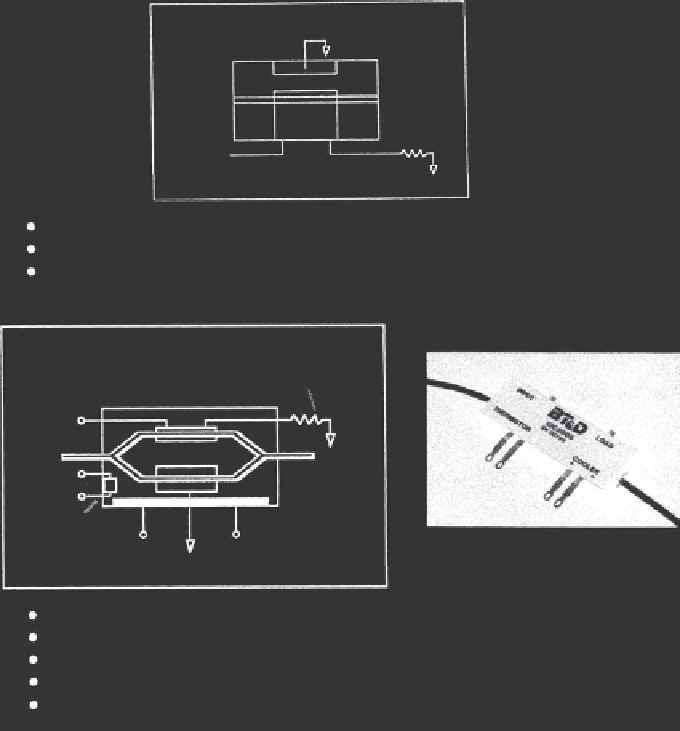Biomedical Engineering Reference
In-Depth Information
KTP phase modulator
Optical input
Optical output
50 Ω
Modulation
input
Fiber pigtailed
Operation to 15 GHz
Wide range of wavelengths (0.4-1.6 µm)
(a)
50 Ω terminating
resistor
Modulation
input
Optical
input
Optical
output
Thermistor
Thermo-electric
cooler
Lithium niobate modulator
Mach-Zehnder modulator/switch
1300 or 1550 nm operation
Operation to 4 GHz
20 dB extinction ratio
Fiber pigtailed
(b)
FIGURE 5.35
(a) KTP phase modulator; (b) LiNbO
3
Mach-Zehnder intensity modulators (Courtesy of British
Telecom & Dupont [BT&D Technologies], London, U.K.);
close together in a fixture and heat stretching the glass over a hydrogen-
oxygen flame until a fused region is created. This is performed while monitor-
ing the optical power through the fibers until a desired optical performance
is achieved. The fused region is then packaged in a stable substrate.
Technical and sales leaders included Gould, ADC, Corning, FBT, E-Tek,
Aster, IOT, IOC, and AMP. Gould is the inventor of the FBT process and
holds some of the key patents. Manufacturing was transferred to Swiftlink
in India, who supplies dual window (1310/1550) FBT components. Corning
patented a multiple index coupler, where a circular glass substrate is applied
around the fibers during fusion. This is claimed to be more stable, but is
more complex. E-Tek designed and developed an automated coupler work-
station, with excellent repeatability and polarization dependent loss.

Search WWH ::

Custom Search